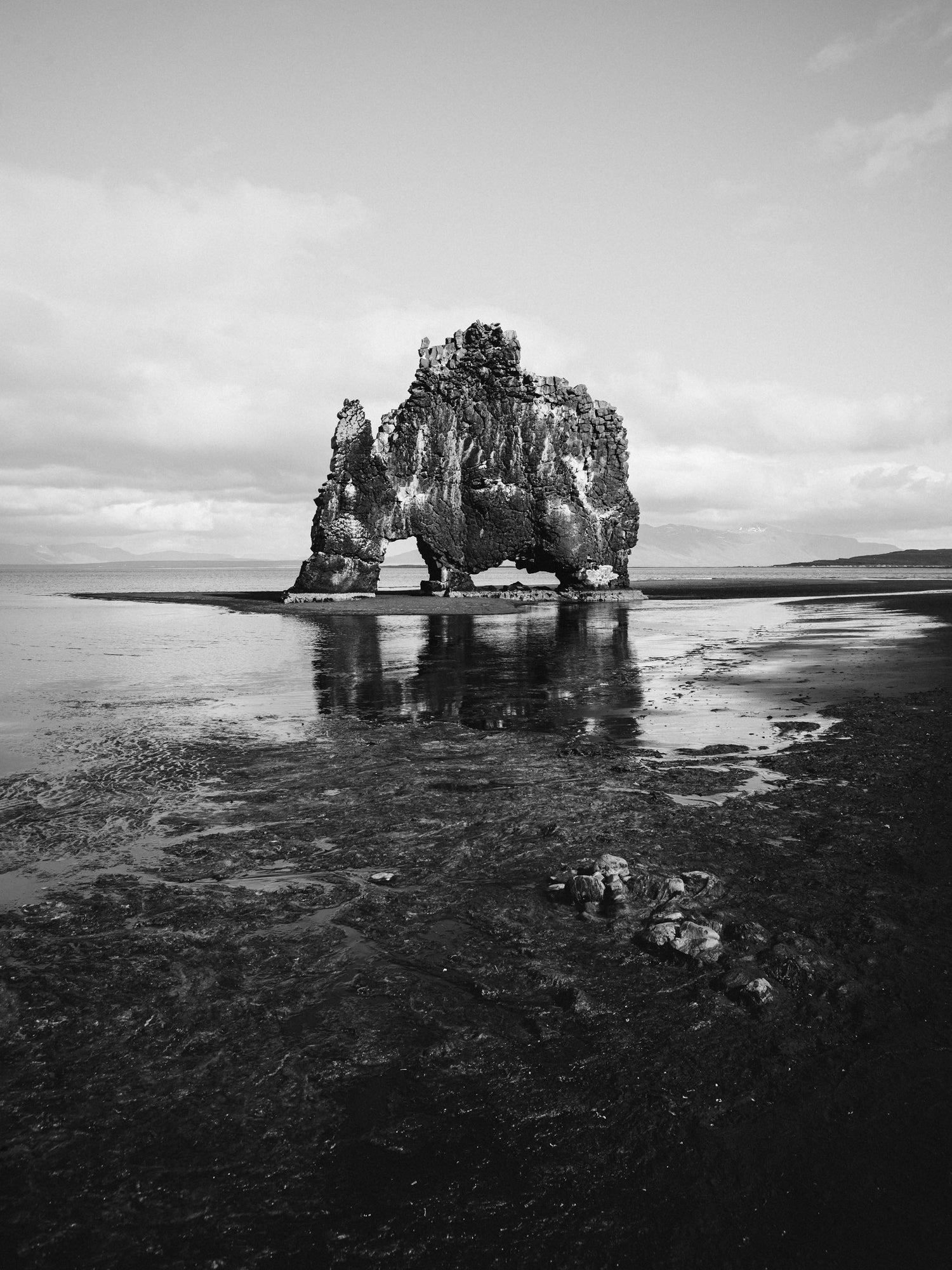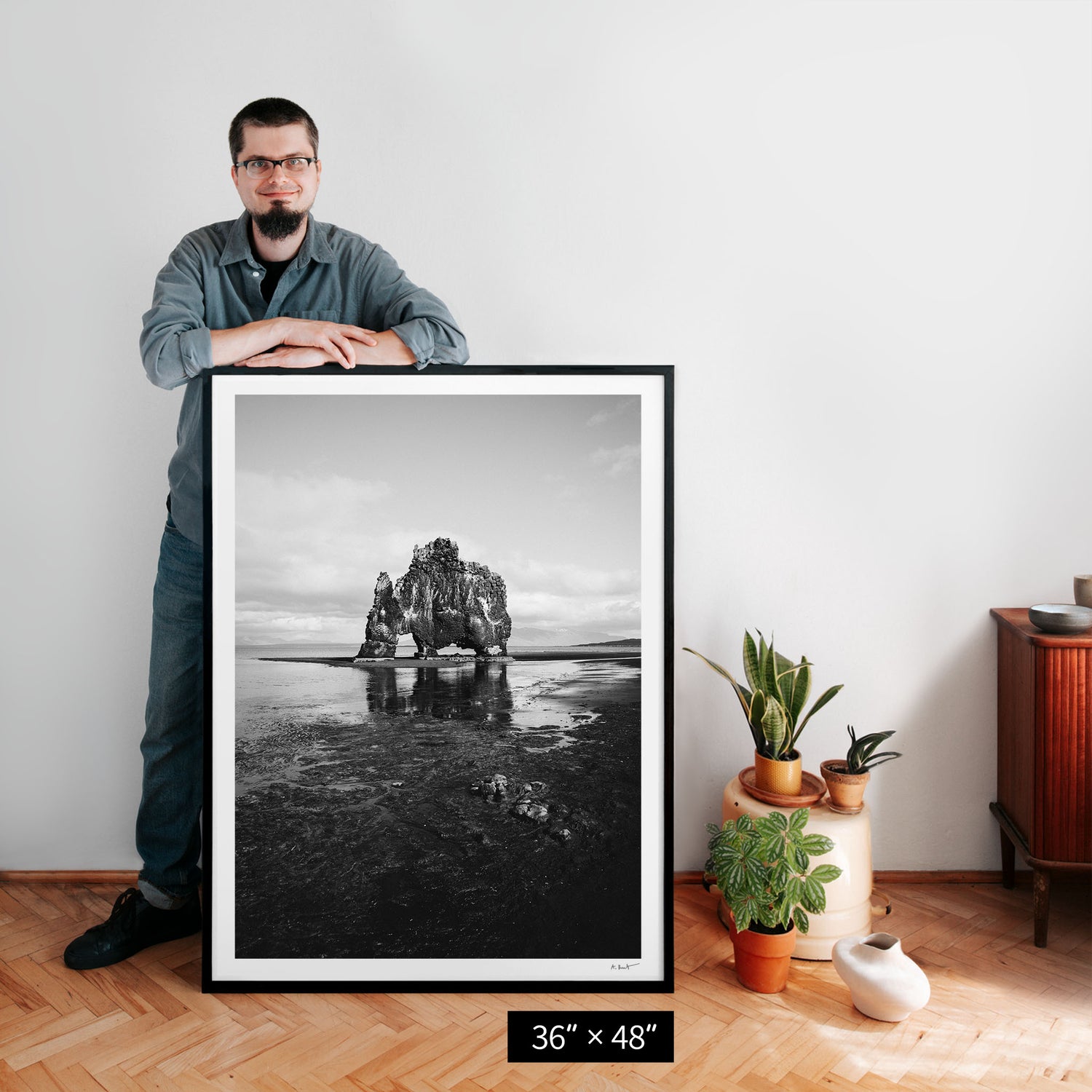
Hvítserkur — Carved by the Sea
— from the upcoming collection Traces of Water —
In northern Iceland, life followed the rhythm of water — slow, patient, unending. This is where Traces of Water was born.
For half a year I lived in a small house by the fjord in Siglufjörður. The days there moved with the rhythm of water — tides creeping across black sand, waves breaking softly against the harbor wall, rain tracing the windows like slow handwriting. Every sound, every reflection, seemed to come from the sea.
I remember one morning when the air felt unusually still. The clouds hung low, the horizon dissolved into grey, and I decided to drive west — no plan, just a need to see what lay beyond the next curve of coast. Hours later, the landscape opened, and there it was.
Hvítserkur.
It rose from the water like a fossil of motion — dark, immense, its arches glinting with salt. Some call it the Troll of Northwest Iceland, others the Rock of the Dragon, but standing there I couldn’t name it. It felt older than myth. The tide was pulling out, leaving the sand slick and mirror-bright. Each retreating wave revealed another detail — the scars, the hollows, the textures carved by centuries of water and wind.
I walked closer, my boots sinking into the wet ground, the air thick with salt and the scent of seaweed. The sound of the ocean around me was layered — a deep hum, a whisper, a pulse. I raised the camera and waited. The light shifted, the reflection deepened, and for a moment the rock seemed to breathe — not solid at all, but fluid, like the sea itself remembering its shape.
I pressed the shutter once.
That frame became Hvítserkur — Carved by the Sea.
Later, driving back toward Siglufjörður, I kept thinking about how water teaches patience. It never forces change; it simply returns, again and again, until even stone begins to yield. Living by the fjord, I saw that lesson everywhere — in the slow polish of pebbles, the sheen of wet sand, the way morning light lingered on the tide before disappearing.
This artwork forms part of Traces of Water — a portrait of the North shaped by tides, rivers, and rain. Together, these images speak of patience, transformation, and the stillness that follows motion.


